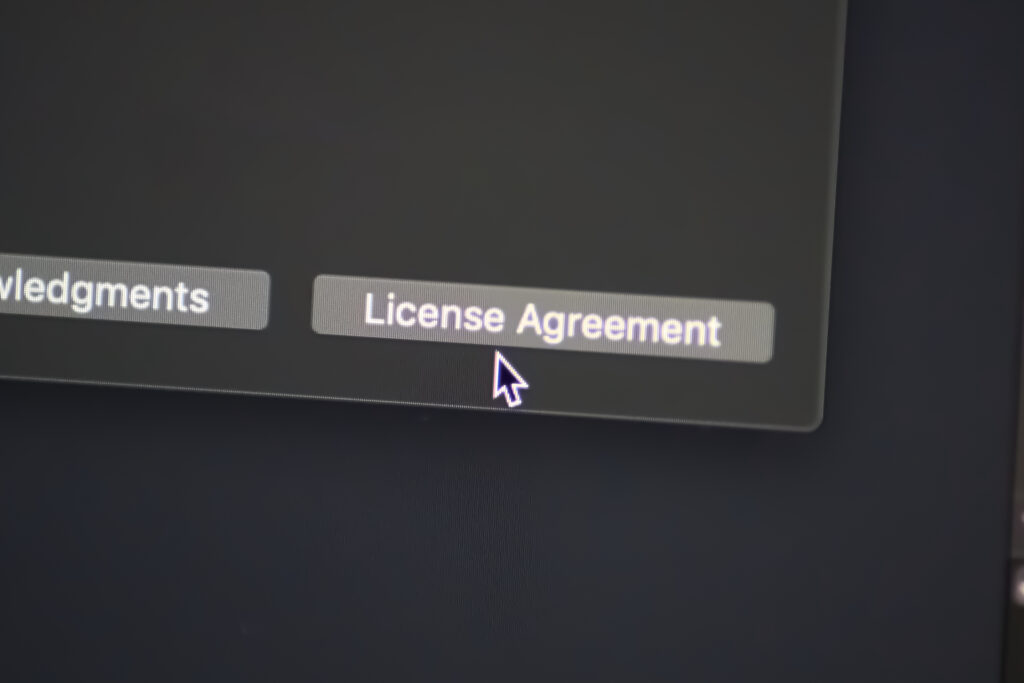Table of contents:
Many people concentrate on code, UX designs, and features when developing a new software project, leaving out another important aspect in the early stages: software licensing. This part of software project development is important for legal protection, compliance, and cost savings.
For example, consider the case of a small startup developing a new productivity app. The startup dedicated months to fine-tuning the user experience and implementing essential features, only to face legal action later due to improper use of an open-source library. Proper licensing upfront could have prevented this costly legal battle.
This blog will tell you more about software licensing and guide you toward selecting the right model for your project. Before that, let us quickly know what a software license is.
What is a Software License?
A software license is a legal document outlining how to use, distribute, and modify the software. The terms and conditions also outline software usage.
These conditions let you know if you can or cannot copy, change, access the source code, or share software. It also ensures your software complies legally with applicable regulations. With this, your project will not be vulnerable to inappropriate use, unsanctioned distribution, or legal issues.
Software Licensing Models
Various projects have led to the development of different software license models. Let us look at the list below and learn about the different models you’ll need to choose from.
#1 Proprietary Software License
A proprietary license has the highest restriction among other license models available. This model grants users the right to use the software but restricts them from accessing the source code. Users also have limits to modifying, redistributing, and even using the software except given permissions.
Only the developer can have unlimited access to its source code. Many companies, like Microsoft, use proprietary licenses to generate income. Users can’t modify or share the software and must adhere strictly to the terms of the software license agreement.
#2 Open Source Software License
Open-source software licenses fit projects that thrive on community input and collaboration. This software license grants users broad rights to freely access, modify, sell, and share the software under certain conditions. Its public availability enables anyone to improve, examine, and adapt to it. Let us look at a few variations in open-source licenses.
- GPL (General Public License): This is one of the most common open-source licenses. Over 50% of open-source projects use GPL, according to a 2021 study. GPL ensures end users can run, share, and modify the software.
- MIT License: This open-source license is permissive. It places few restrictions on what users modify and redistribute. An estimated 25% of open-source projects utilize the MIT license.
- Apache License: The Apache License bears a resemblance to the MIT license. It has specific rules that govern the license use, which gives it more legal protection. Google stated in a May 2008 blog post that more than 25% of the approximately 100,000 projects hosted on Google Code at that time were using the Apache License.
#3: Freeware and Shareware
Freeware and shareware are two different licensing models often used interchangeably.
Users can access freeware software at no cost. While it has no monetary value, its features and functionalities are limited. There might be restrictions on how users modify and redistribute it. Businesses can use it as a marketing tool to attract and entice users to pay for premium versions with additional features.
The shareware model provides users with a trial or free version for a limited period. Initially, users can download and use the software for free, but eventually, they must pay a fee for continued usage.
With this payment, users can get access to a full version that goes beyond the trial version and unlocks all the software features. We use this license model for games or productivity software to provide potential customers with a preview of the full product.
#4 Subscription Licensing
Another model known as software as a service is subscription-based licensing. This model requires users to pay a recurring fee for a license. Customers make monthly or annual payments and only have the right to use the software during the subscription period. For example, Adobe’s Creative Cloud is a widely adopted subscription model.
This model is a beneficial way for developers to generate revenue, and in return, they provide updates and support for as long as the subscription lasts. Think of services like Adobe Creative Cloud or Microsoft Office 365; this software model provides cloud-based products that reduce IT burden and eliminate the need for on-premise software maintenance.
#5 Perpetual Licensing
Perpetual licensing is a model where users pay a one-time fee for the right to use the software indefinitely. Users can purchase and continue using software for a long time without worrying about a recurring subscription fee. It is a cost-effective model that provides a sense of control and ownership over the software.
High-end graphic design or engineering tools with specialized software often use this model for development. The downside is that users cannot access support, updates, or new features. They may need to pay additional fees for separate maintenance.
Choose the Software License That Is the Right Fit for Your Project
Now that you are familiar with the different types of software licenses, let’s explore some factors to consider when deciding which is best for your project.
#1 Project’s Goals and Budget
The first step in making sure you select the right software license is to understand your goals and evaluate your budget. There are numerous licensing models available, so it’s important to ask yourself these questions.
- Would you like to have control over your code?
- Will you be fine with others modifying and distributing it?
- What is your budget for the upfront cost and total cost of ownership for the license?
- What is the purpose of the software? Does the software have a commercial purpose in mind, or do you prioritize community collaboration?
To guide your decision when selecting a software license, it is important to identify and understand your goals. For instance, a proprietary or subscription-based license might enable you to make more income if that’s your goal, while an open-source software license will be better if you want to collaborate with others to foster innovation.
Also, check your budget to see if you can make a one-time or recurring payment. Updates and maintenance costs are expenses you should evaluate and make a budget for. When you consider these factors, you can make a decision that benefits your project and doesn’t put you at financial risk.
#2 Consider Your Audience
You should also consider those who will use your software. What are the limitations of the software in terms of usage rights? Some software licenses will restrict usage on the premises or in the cloud.
You need to determine whether they require access to the source code or if they require flexibility in how they use or modify the software. Identify your target audience to determine if you seek developers or non-technical users. It will help you choose the software licensing model that balances your needs and goals with your users’ satisfaction.
#3 Factor in Legal and Compliance Requirements
Another important factor you must consider is its legal requirements. Your software needs to comply with legal terms to avoid legal issues. It should meet the industry-specific regulations necessary for your organization, like HIPAA or GDPR.
In some cases, you can incorporate a software license management system, especially for industries requiring strict compliance standards. These measures will guarantee your compliance with the law. Additionally, if you’re outsourcing a third-party code to your project, you must review their software licenses promptly to avoid legal risks.
#4 Think About Future Flexibility
Finally, flexibility is another factor you must assess. You need to determine whether it is adaptable enough to accommodate future changes. Can it scale with your business growth? Will it adapt if there is a change in your organizational structure? Evaluate the software to determine if it can handle an increase in your data, additional users, and added functionalities.
While a proprietary license allows you to maintain complete control, the burden of support and updates may present challenges. On the other hand, open-source licenses can provide more flexibility and allow others to contribute to the project’s growth.
How We Can Help
Software licensing is an integral part of the success involved in any software project. As such, North South Tech has experts ready to guide you through the licensing maze, ensuring you get only what you need for your project and business.
Whether it be an enterprise managing a complex software infrastructure or a small startup developing a productivity application, we guide you through the intricacies of proprietary, open-source, freeware, shareware, and subscription-based licensing models. We will work in tandem with you, assessing your project’s objectives, intended audience, and long-term perspective to recommend a licensing strategy best suited to your interests.
These extensive services include legal compliance review, license management system implementation, and ongoing support to keep your software compliant and updated with your ever-evolving business needs. You can be confident that North South Tech will safeguard your software project from legal risks and ensure its success.
Our team simplifies the process of software licensing. Contact us today and let our team of experts guide you in making the correct choice for the future of your project.






